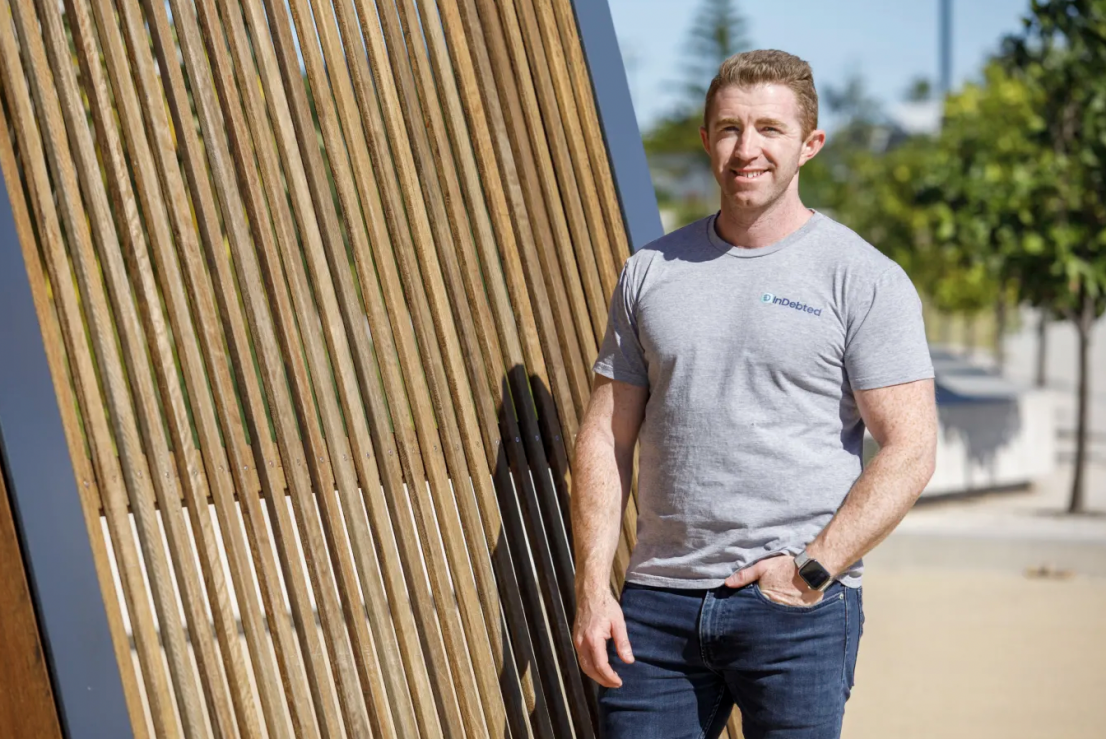
Nikolas Badminton was born in the Somerset village of Martock, England in 1972. He didn’t do well at school and dropped out to work as a milkman before his parents encouraged him to go back to college to study a newfangled subject called computing science.
Fast-forward to today and Badminton has his own child – a 19-month-old son – there is no milkman in Martock and the subject he studied turned out to be the basis of modern life. Like all parents, he wonders what lies ahead for his child – but he knows more than most.
Badminton is a futurist. This means he spends hours of every day reading about new technological developments across all sectors to see patterns that help him speculate about what the future holds. He is paid to share his vision of technological trends with organisations such as NASA, Google, Microsoft and the United Nations.
So, what lies ahead for children being born today? What will the workplace look like when they turn 18 in 2040? Will university still exist? Will robots be doing our work?
“It’s not which jobs will be automated, but when they will be automated: every part of the economy will be affected,” says Badminton, whose book on the subject, Facing Our Futures, will be published by Bloomsbury this year.
“Machines are predicted to be better than us at translating languages by 2024; writing high-school essays by 2026; driving a truck by 2027; working in retail by 2031; writing a bestselling book by 2049; and performing surgery by 2053,” says Badminton. “In fact, all human jobs will be automated within the next 120 years.”
Some jobs may not exist at all in the future: taxi drivers are likely to be replaced by self-driving cars; cashiers and retail staff will largely be replaced by machines that will let you pay for items yourself (such shops already exist). Deliveries might be done by drones, and much of telemarketing and customer service will be done by artificial intelligence (AI).
Changes for accountants and lawyers
Accountancy, construction, law and medicine will still exist, but they will look very different. “For example, right now we are in the early stages of fully-automated surgery,” says Badminton. “So you could say that at some point in the future, you would roll up at a hospital, you go in, get prepped – maybe there are some humans to help out in the prep – but no human touches you in surgery, and ultimately you heal faster and the machine operation can tap into the knowledge of all the surgeons in the world – that’s the trajectory we are heading towards.”
What is more, AI has proved to be more effective than human doctors in terms of diagnosing certain conditions. That, of course, has huge implications for human doctors. Similar advances are being made in dentistry, where robots are already doing routine jobs better than humans can do them.
In accountancy, work that used to be done by humans is now being performed by computers; while in law, AI will be able to read through vast swathes of research that previously a recent graduate would have had to plough through. A study by the multinational professional services network Deloitte concluded that 100,000 legal roles will be automated by 2036.
But amid all the disappearing jobs there is good news. “While there will be a shift towards automation, I think we’ll be a world of the human and machine working together in symbiosis,” says Badminton. “We will be freed from repetitive work to do more creative things together. I call this new world the ‘wisdom economy’.”
He explains: “AI will not be good at creative problem solving, empathetic reasoning, philosophical debate and the human group dynamics of collaborating for a very long time. Deep human connection, empathy, curiosity – very human things – will be vital. Our human inquiry is still going to steer the ship.”
Tap into your creativity to succeed
Carolyn Parry, founder of career coaching and training company Career Alchemy and president of professional body the Career Development Institute, agrees. “As AI increases, the parts [of us] that make us human – our empathy, creativity and problem-solving ability – are going to be more important than ever,” she says.
Parry adds that our resilience and adaptability will also be vital as the rate of change in the world will keep increasing. Most importantly, she believes, parents and grandparents should not assume that what worked for them will work for their children – quite the opposite.
“What parents can help their kids with is to get them to think originally – and I’m not just talking about drawing and design here, I’m talking about original thinking. New developments will come at the intersection of so many different disciplines. So if you think about a Venn diagram, you take three different disciplines and you overlap them – that’s where the opportunity is. This is where the cure for cancer will come from.
“Anything related to Stem [science, technology, engineering and mathematics] is good – if it interests them. But if it doesn’t, don’t push your youngster down a route they don’t want to follow. It’s a recipe for a disastrous start in life.”
Here are the jobs of the future:
Human-centred designers and ethicists
Salary: £100k+ ($174,370+) (Estimated 2040 salary, taking inflation into consideration).
Today they would be: Systems designers, software engineers, professors of ethics, psychologists, philosophers.
Education needed: Anything from computer science, philosophy, psychology and design and ethics. “There are a lot of people doing master’s degrees and PhDs in this field today,” Badminton observes.
When we use technology such as Facebook or Twitter today, we do so by agreeing to their terms and conditions. In exchange for us being able to communicate and access information, we hand over lots of our data. If we post pictures of our children, Facebook owns those pictures. If we share details of our health, it owns that information, too. In the future, that will change, according to Badminton.
Technology will be designed so that the human using it will be the priority, not the company. “A human-centred design turns the tables on everything. It says, ‘Let’s put the rights of the person using the system ahead of the company’s rights; let’s work out ethically how we can work with them,’” says Badminton. “It asks, ‘What’s going to be right and fair for the human individual?’”
Twitter is already operating this way, but many more qualified individuals will be required to roll out the approach across other tech-based businesses.
Data scientists and brokers
Salary: £75k+.
Today they would be: Software developers, data and business analysts, database administrators, AI trainers and engineers.
Education needed: Computer science, data analytics, psychology, statistics, economics, data science
“By 2040, data will be created at a rate of more than 200 petabytes per year [a petabyte is 1000 trillion units of text or information], with more than 8000 digital data interactions per person every day – one every 10 seconds or so,” says Badminton.
“Every company will need teams of highly-trained data scientists to help them explore opportunities in the data they have and empower their employees and customers. There is an idea called ‘data dignity’, which means that you have the right to own the data you produce. So, every time you go on Facebook, for example, you will own the data you produce. You have the right to keep that private or to sell it to people that can use it – so you have your own personal data economy that can earn you money.” People who sell your data for you will be members of a new profession: data brokers.
Robot therapists
Salary: £250k+.
Today they would be: Psychologists.
Education needed: Psychology with other disciplines, such as computing, neurolinguistics, social work and ethicstics.
You may have heard of the phrase “the internet of things”, which refers to the idea that objects can be connected over the web, letting them talk to us and each other. The popular example is the smart fridge, which would be able to text you and let you know that there was no milk left, or that it passed its use-by date.
Or it might be that your alarm clock will talk to your toaster, so that your toast is done when you get into the kitchen. It might also be connected to other toasters to get information about how much other toasters are being used and when.
But what if you don’t use your toaster any more? How will your toaster feel about that? And yes, your toaster will have feelings
“Machine learning, smart devices and robotics will be so prevalent in society that these will become sentient and start to feel like we do,” says Badminton.
“Professional psychologists will upskill to understand the nuances of artificial intelligence and how machines learn. Our toasters may need help – and we will be there for them.”
Robot translators
Salary: £50k.
Today they would be: Human linguists and translators.
Education needed: Languages, linguistics.
“I spoke to a Year 13 student this week and he wants to be a linguist,” says futurist Matthew Griffin, founder of global futures think tank the 311 Institute. “But while once upon a time he might translate Chinese or Italian, now he could translate AI.”
Some believe that we should teach artificial-intelligence programming in schools the same way we teach French: just as French is the language of French people, programming is the language of computers.
According to Griffin, Google and Facebook recently discovered that AI bots, originally designed to talk to each other in English, had actually invented their own languages.
“Artificial-intelligence translators will be people who are skilled in trying to understand the different languages that AI has created for itself and by itself.”
Food engineers
Salary: £75k.
Today they would be: Farmers.
Education needed: Biochemistry and engineering.
“Today, we have the ability to 3D print food,” says Matthew Griffin. “We also have the ability to grow different kinds of food in bioreactors – which is where you take a cell from an animal, put it into a bioreactor and literally end up with a pound of that meat. So a food engineer is a person who is able to engineer different foods at the molecular level.”
Metaverse architects and world builders
Salary: £100k+.
Today they would be: Architects, video-game designers, FX artists, visual artists, musicians and sound engineers, fashion designers, retail experts.
Education needed: Computer design visual effects, computer programming, hardware design.
Put on a virtual-reality (VR) headset now and it feels like you’re in another world. The “metaverse” is the idea that VR will become a normal part of our lives, like the internet or computer games.
“We will live in a mixed-reality world, so I could wear normal-looking glasses and look around my world and it will be augmented with information about objects,” says Badminton. Facebook has spent billions on the concept, with Microsoft and Google investing, too.
Instead of having business meetings via a Zoom call, by 2040 we may meet in VR spaces. “Virtual versions of ourselves will meet in virtual conference rooms, with virtual art and furniture,” says Badminton. “This virtual world will be built by huge teams.”
Activist artists and creators
Salary: £75k+.
Today they would be: Artists, writers, TV programme-makers.
Education needed: Art, music, choreography.
Badminton predicts that by 2040, television as we know it will have ceased to exist. The current world, where people make entertainment and we watch it, will be replaced with more collaborative and interactive forms of TV, music, videos and art.
He also believes there will be a resurgence of live theatre and street performance. This will be about more than just entertainment: “It will bind together society, create purpose behind life and take on governments and big business alike.”
Local entrepreneurs
Salary: £50k+ to millions.
Today they would be: Entrepreneurs.
Education needed: Any.
We are already seeing entrepreneurs selling services and products online from the UK with worldwide reach, using local and international freelancers to help build their businesses. In the future, millions more people will start their own business. “Some of it’s going to be online, some offline, some will be artisanal services that people want because they don’t want a robot to make them a sandwich,” says Badminton. “I could start a business in Somerset creating T-shirts and I could sell to a group in Bhutan.”
Cybersecurity and misinformation experts
Salary: £100k+.
Today they would be: Software developers, data and business analysts, database administrators, AI trainers and engineers, cybersecurity experts.
Education needed: Computer science, information theory.
We will need online policemen to respond to cyberattacks and ensure privacy, security and safety for all. We will also need people who will guard against misinformation. “There are currently troll farms that pump misinformation on to social-media platforms and we will need trained people to understand what is fake and how to stop it,” says Badminton. “These will be among the best-paid jobs in organisations in the late 2030s and throughout the 2040s.”
Healthcare professionals and biohackers
Salary: £75k to £1 million+.
Today they would be: Doctors, nurses, surgeons, physiotherapists, nutritionists.
Education needed: Traditional medicine and an array of specialities, including nutrition and technology.
Longevity seems likely to become a key goal for the ultra-wealthy, as the average age of those with more than £10 million in earnings may advance to about 130 years old. “There will be specialist hospitals with enthusiastic doctors, nurses, surgeons, and research and development looking at how everything from implantable tech to psychedelics and diet ensure a longer life for those who can afford it,” says Badminton.
Biohacking is the practice of using implantable technologies, diet, supplements, medical procedures and stem-cell injections to extend human life decades beyond the current normal range. “In the future, if you are ultra-wealthy and want to live forever, we can make that happen,” says Badminton. “Biohackers will have qualifications that allow them to advise on diet, implants, technology, sleep, psychedelic therapy and so on. An ageing population also means there will be a big demand for carers and nurses.”
Will people still do traditional degrees?
Career coach Mark Anderson predicts the rise of apprenticeship degrees, in which students undertake paid work alongside their studies, with their education paid for by their employers. Students may earn “micro-credentials” on shorter courses that contribute to their degree and many courses will mix online and face-to-face learning – a process widely adopted during the pandemic.
The jobs market of the future will continue to evolve, meaning that people will need to be reskilling and continuing to learn throughout their life.
Anderson advises young people to look at the list of 17 world development goals published by the United Nations. “These are world problems that need to be solved – hunger, clean water, pollution, education,” he explains. “This will help you find an area you care about.”
Badminton believes that in the future, work will be purpose-driven and there will be no straightforward jobs for life – instead, people will work on different projects simultaneously. “We’ll be a society of generalists and people with multiple projects on the go,” he says. “Jobs might be seen as a ‘constellation of projects’.”
Which is why Badminton is hopeful for his own child. “In 2040, he will be 19. I am glad that he will be able to take advantage of all the automated services around him and not have to spend weekends flipping burgers.
“The fact that kids today can build a business on a phone, it’s incredible... If you have got the skills and work hard enough, you can achieve something pretty incredible.”
— The Telegraph London











